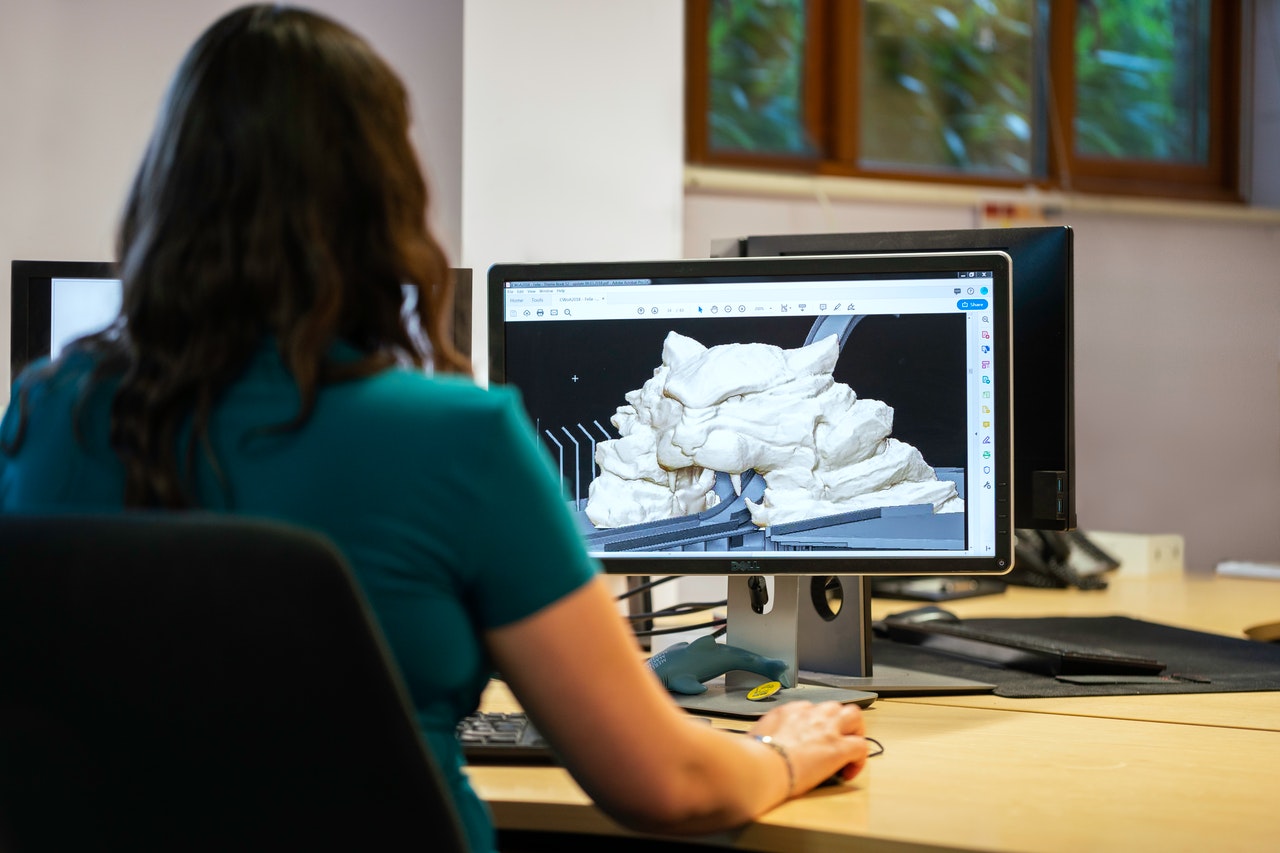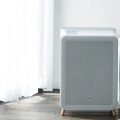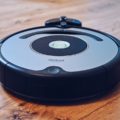Table of Contents
3D printers have come a long way since being used in an industrial backdrop.
The economy of scale and rapid evolution of tech means you can now buy one of these magnificent creative tools for far less than you might imagine.
We’ll cut straight to the chase with our 5 best 3D printer reviews before summarizing the key points of importance when you’re looking to get the most effective printer for your needs.
5 Best 3D Printer Reviews
We’ll get directly down to business with our reviews. After presenting 5 of the best choices on the market for your home and garden, we’ll walk you through how to focus on getting the most appropriate tool for your needs.

If you think 3D printers call for demanding set-up, you’d be wrong with the Plus. You’ll be up and running in a half hour and the free bundled software allows you to operate across all platforms from desktop to laptop to phone.
Laser cutting is accurate to 1/1000 inch, you can carve down a full ½-inch and printing covers a pretty impressive 1300 lines per inch.
Some users have griped about materials but you’re actually spoiled for choice. From metal and wood to glass and acrylic, believe it or not you can even work with chocolate! Thanks to Autofocus, the printer will pick up on materials automatically so all you need to do is power up, tweak the settings and insert your drawing or plan. Glowforge Plus does the rest.

For a safe, wireless and user-friendly introduction to 3D printers, Glowforge Plus makes a great entry point whether you want it for home, school or your business. Sitting neatly between the Basic and Pro model, the Plus is a rock-solid choice.
Pros.
- Autofocus on printer recognizes material instantly
- Pass-through slot allowing unlimited engraving length
- 45-watt laser tube powerful enough to carve through ½-inch of hardwood
- Great combination of safety features and durability
- Sleek and stripped-down design so looks great on the desktop
Cons.
- Double the price of Basic model but with functionality to match the price tag
- Some complaints about third-party materials support

This is an FFF (fused filament fabrication) printer that takes 1 ¾mm PLA and nothing more. Although limiting, it does mean you won’t need a heated print bed either.
Setup is not the easiest and you should set aside a good couple hours even if you’re pretty tech-savvy. Things change once you’re ready to roll and operation is straightforward.
You’ll need a slicer program to prepare your plan – FlashPrint is free and thrown in – and gives you both manual and automatic functionality.

The improved second-generation gives you better WiFi connectivity and the slide-in build plate makes slipping your model out a piece of cake.
For an affordable starting point with 3D printers that doesn’t wildly disappoint, the Flashforge Finder is well worth your further investigation.
Pros.
- Design of side plate allows for easy removal of objects
- Easy to use even for absolute beginners
- Great connectivity through USB, WiFi, flash drive or Cloud
- Touchscreen is crisp, clear and simple to operate
- Great value for money as an entry-level model
Cons.
- Reasonably awkward to set up so be prepared

The twin issues of noise and airborne pathogens are addressed with this 3D printer packing a highly efficient HEPA filter and running almost silently.
You can now control this neat 3D printer with voice commands using Alexa while Voice Guidance gives status updates while also helping with diagnostic issues.
The physical printer is pretty tall but this increased footprint yields an impressive build volume of 228 x 200 x 300mm. Also, a dual-cartridge system doubles up capacity for each print run.
If you’re looking for a workable compromise between a pro-grade 3D printer and something that won’t bankrupt you completely, we’d urge you to go and check out the Sindoh 3DWOX 2X at your earliest convenience and you could be creating awesome models tomorrow.

Pros.
- Almost whisper-quiet operation
- HEPA filter sucks away the fine particles kicked up so work without any irritation
- Alexa-enabled so control your printer with voice commands
- Use a diverse range of materials for maximum flexibility
- First-rate connectivity covering all main bases
Cons.
- By no means cheap but you’ll see where the money went

It’s principally the small build area that disappoints but for anyone who doesn’t want or need to make massive models, that’s no issue.
Since you won’t need to squander hours piecing things together and the printer is super-simple to use, this in all respects makes a superb starter model earning our highest commendation today of best budget 3D printer that doesn’t sacrifice print quality.
Accepting all types of filament, this rebooted v2 of the classic Maker Select Mini is proof positive that not all 3D printers need to be ruinously expensive or large enough to fill half your room.

Pros.
- Incredible value for a 3D printer
- All filament types supported for your complete convenience
- Arrives fully assembled and calibrated so you’re ready to roll straight out the box
- Outstanding build quality considering the price-point
- More than serviceable print quality for a budget 3D printer
Cons.
- Obviously cannot compete with pro-grade alternatives
- Pretty small build area so keep your expectations in check

The plate is fashioned from aircraft-grade aluminum and this printer is built to stay the distance but not at the expense of aesthetics. The design is a statement piece.
Maximum build area is 9 x 6 x 6 inches but the printer itself is quite lightweight at only 46 pounds and it won’t take up too much space either.
You can use either ABS or PLSA filaments up to 1 3/4mm thick so this printer is more restrictive than some. You’ll get a spool of each chucked in so you can get started immediately without further expense. Think about what you want to make and whether or not this material limitation meshes with your needs.
Layering is natural with overall print quality highly commendable.
For a mid-level 3D printer with an almost budget price tag, the QIDI Technology dual extruder is pretty tough to beat.
Pros.
- FDM printer with a non-warping aluminum plate at a pretty keen price
- Exercise choice in print quality to combine economy with performance
- 2 spools, smoothening pen and print removal tool threw in
- Rugged design that’s also remarkably easy on the eye
- Responsive and supportive customer care arm
Cons.
- Obviously cannot compete with pro-grade alternatives
- Pretty small build area so keep your expectations in check
OK ...
So, with our best 3D printer reviews tucked into bed, here are some simple pointers to streamline your buying decision.
What To Look For In The Best 3D Printer
We’ll strip down the science and tech right now so you can focus on what counts in plain English if you want to ensure you get the best 3D printer for your needs.
Type of Printer
While there are 9 main types of 3D printers, for consumer purposes, only 2 count:
- FFF (fused filament fabrication)
- SLA (stereo lithography)
FFF 3D Printer
FFF printers can be further divided into FDM (fused deposition modeling) and FFM (fused filament manufacturing) devices.
With FFF printers, you melt a plastic filament in the device’s moving printhead. This forms the foundation of your model.
The key selling points of FFF printers are price and user-friendliness.
SLA 3D Printer
With an SLA 3D printer, UV lasers come into play so the resin is solidified into your model.
Although SLA printers are slightly more complex and a lot pricier, things are improving on both fronts.
Materials Used
A core factor when choosing a 3D printer is the type of materials it uses. You should think about what you plan to make rather than expecting a one-size-fits-all solution.
FFF printers use filament like ABS (plastic), PLA (biodegradable so great for eco-friendly model making), TPE (soft and rubberized) all available in a broad spread of colors so your creativity can run riot.
Although SLA printers offer more limited material options, you can still make models in flexible material or you can make them much more brittle.
Build Area
Build area is a key metric and simply refers to the maximum dimensions of models you can conjure up.
You could argue that bigger is better but you should bear in more increased size generally results in a higher price-point.
Think closely about how you’ll be using your 3D printer and buy in line with your intended usage.
Printing: Speed and Quality
Start by accepting that 3D printing is still not a rapid process.
At the bottom end, cheap 3D printers can manage a fairly paltry 50mm per second.
Unfortunately, as you start paying more, you might get a quicker print job but this often comes at the expense of visible layers in your finished model.
Our considered opinion is that slow and steady wins the race right now. Tech improves at an incredible rate so we’d fully expect pace to increase in the near future without that negative impact on quality. Right now, though, you shouldn’t consider speed as a benchmark of quality.
A Final Word
We hope you’ve enjoyed these best 3D printer reviews as much as we enjoyed testing them.
If you take your time and give careful though to what kind of models you’ll make and stick firmly to your budget, there’s no reason not to be making the most ambitious models tomorrow without taking out a bank loan.
Come back soon for more great ideas for your home and garden.




